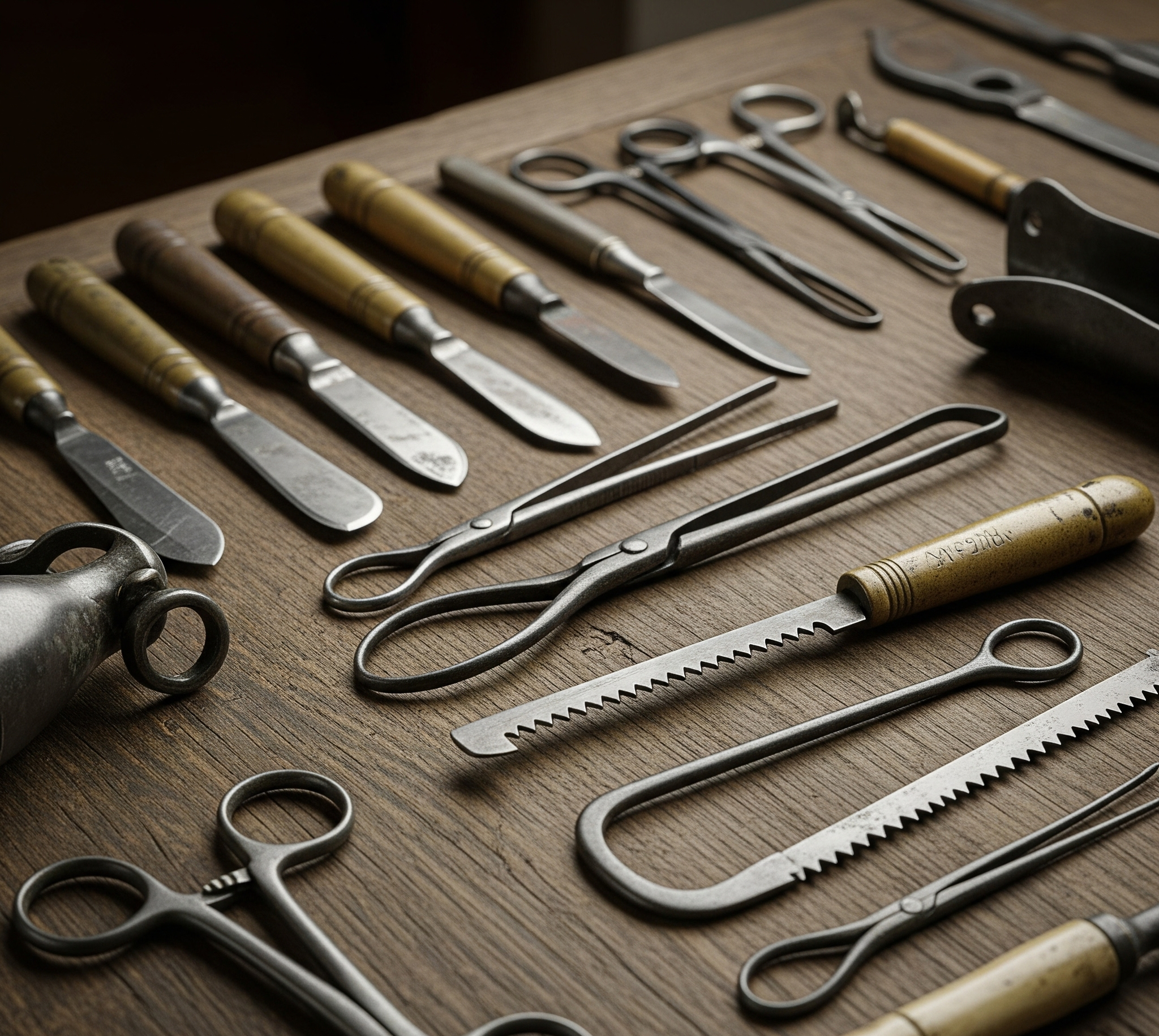Introduction
When we think about surgery, the first images that come to mind are modern hospitals filled with high-tech tools. But surgery is not a modern invention—it dates back thousands of years. Among the earliest and most advanced civilizations in surgical practice were the Romans, who developed an impressive range of surgical instruments.
Roman surgical instruments demonstrate the ingenuity of ancient medicine and highlight how the foundations of today’s surgical practices were laid centuries ago. These tools, made primarily from bronze and iron, reflect the Romans’ deep understanding of anatomy, wound treatment, and battlefield medicine.
This article explores the history, categories, uses, materials, and legacy of Roman surgical instruments in detail.
The Role of Medicine in Ancient Rome
Roman medicine was heavily influenced by the Greeks, especially Hippocrates and Galen. Physicians in Rome used both practical and spiritual approaches to treat illness. Surgery was particularly important in the military, where battlefield injuries were common.
The Roman army maintained medical corps and field hospitals where surgeons (medici) treated soldiers using specialized instruments. Their surgical kits were remarkably similar to those used in later centuries, proving how advanced Roman medicine was for its time.
Materials and Craftsmanship
Most Roman surgical instruments were crafted from:
- Bronze: A common choice for its durability and resistance to corrosion.
- Iron/Steel: Used for sharper instruments like scalpels and hooks.
- Silver: Occasionally used for tools to prevent infection.
These instruments were not crude; many were highly polished, carefully shaped, and designed with ergonomic features to aid precision.
Categories of Roman Surgical Instruments
Roman instruments can be divided into several functional categories.
1. Cutting Instruments
- Scalpels (Scalpella): Made with bronze or steel blades, used for incisions.
- Bone Saws: Used in amputations and bone surgeries.
- Knives: Various shapes for different surgical needs.
2. Probing and Examination Tools
- Specillum (Probes): Long thin rods used to explore wounds.
- Spoons of Diocles: A combination tool with one end shaped like a spoon to remove foreign objects such as arrows.
3. Extracting and Grasping Instruments
- Forceps (Vulsella): Used to extract teeth, arrowheads, or small bones.
- Hooks (Uncus): Single or double-ended, used to hold skin, tissues, or organs during surgery.
4. Cauterizing and Sealing Tools
- Cautery Irons: Heated to burn wounds and stop bleeding or prevent infection.
- Styli: Used for cauterization and occasionally for cosmetic procedures.
5. Gynecological Instruments
- Speculum (Specula): A hinged tool used for examinations, remarkably similar to the modern gynecological speculum.
- Dilators: For assisting childbirth or gynecological procedures.
6. Orthopedic and Dental Instruments
- Dental Forceps: For tooth extractions.
- Bone Elevators: To separate bone fragments.
- Trephines: Circular saws used in cranial surgery.
Common Uses of Roman Surgical Instruments
Roman surgeons employed their tools in various medical situations:
- Battlefield Medicine: Treating wounds, extracting arrows, amputating limbs.
- Orthopedic Surgery: Realigning bones and fixing fractures.
- Dental Care: Extracting teeth with forceps and cleaning them with scrapers.
- Gynecology & Childbirth: Assisting in delivery and examinations.
- Cosmetic Surgery: Correcting facial injuries, especially among soldiers.
- Cauterization: Preventing infection and controlling bleeding.
Notable Roman Surgeons and Contributions
- Hippocrates (Greek influence): His teachings shaped Roman surgical practice.
- Aulus Cornelius Celsus: Wrote De Medicina, a major source of information about Roman instruments.
- Galen of Pergamon: Advanced surgical techniques and anatomy knowledge, influencing medicine for centuries.
These surgeons used Roman instruments to perform operations that were remarkably advanced for their time, including cataract surgery and brain procedures.
Discovery of Roman Surgical Kits
Archaeological findings have provided incredible insights into Roman surgical practices.
- Pompeii & Herculaneum: Excavations revealed complete surgical kits preserved under volcanic ash.
- Surgeon’s House at Rimini (Italy): Contained over 150 medical instruments, many resembling modern tools.
- Vindolanda (UK): A Roman fort where surgical tools were found, showing their use in military camps.
These discoveries prove that Roman instruments were not primitive but carefully engineered for medical use.
Comparison with Modern Surgical Instruments
While modern instruments are made of stainless steel and benefit from sterilization technologies, the basic design of many tools remains unchanged.
- Roman speculums, scalpels, and forceps closely resemble modern versions.
- The use of cautery irons has been replaced with advanced electrosurgical devices.
- Probes, hooks, and dental forceps are still essential in today’s surgeries.
This continuity shows the brilliance of Roman medical engineering.
Challenges in Roman Surgery
Despite their advanced instruments, Roman surgeons faced many challenges:
- Lack of Anesthesia: Patients endured surgeries awake, often in pain.
- Infection: Without germ theory, infections were common.
- Limited Knowledge: Anatomy was not fully understood, leading to risks.
- Mortality Rates: High compared to modern standards.
Yet, considering the era, their achievements were remarkable.
Legacy of Roman Surgical Instruments
Roman instruments paved the way for modern surgical practices by:
- Establishing specialized surgical tools.
- Documenting procedures in medical texts.
- Demonstrating that surgery could be systematic and scientific.
Their influence persisted throughout the Middle Ages and Renaissance, eventually shaping the instruments we use today.
Conclusion
The study of Roman surgical instruments reveals not only the brilliance of ancient craftsmanship but also the roots of modern surgery. From scalpels and forceps to speculums and trephines, these tools demonstrate that the Romans possessed both the skill and knowledge to perform advanced medical procedures.
Although limited by the absence of anesthesia and sterilization, Roman surgeons set the foundation for medical innovation. Their instruments continue to inspire historians, archaeologists, and medical professionals alike.
At Professional Enterprises, we recognize this legacy and continue the tradition of precision by offering modern surgical and dental instruments crafted with German stainless steel—where history meets innovation.

